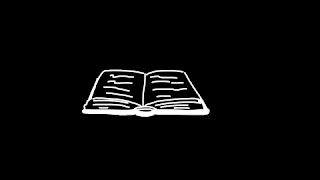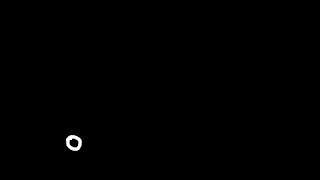What have I learned?
I learnt that animating is a tedious process, that I have to associate an animator with a hermit. Not being familiar with the software used to make an animation might be a contributing factor for this tedium. For instance, I tend to do things the hard way because I have no clue of how to do it in the fastest way. Fortunately, many people in the class gladly point out my mistakes, and help me figured out how to use the tools that could make the process even faster.
Outside the course, I learnt some basic survival skills such as cooking and getting a place to stay in for the night when I got locked outside my place (and my phone died when I was just about to ring my flatmates) after a night out. I never cooked in my whole life before I came here mainly because I spent the past 5 years living in a boarding school and food had always being served three times a day. Although I am far from being a professional chef, I am happy with what I cook. Moreover, cooking has become a ritual for me to unwind after a busy day of animating in the studio.
Here goes the long story of me getting locked out for a night: I was out with some people in the course, and apparently I dropped my key at one of their place (oh lucky me). So, I went back to my place without knowing that I dropped my key. I arrived at my place without my key, but my phone died when I tried to call my flatmates. So, I went to a nearby takeaway place to take shelter like a hobo ,but unfortunately, they were closing at that time. Luckily, there are these two guys called Issac and Dinko who were still waiting for their food to be served. I was reluctant to ask them to let me stay at my place, but I had no choice. So, I decided to go for it, and they both treated me well, lend me a charger and let me sleep on a couch in their living room after a little bit of friendly chat. I went home the next morning with my phone fully charged. Ultimately, this incident reminds me to check on my key every now and then and restored my faith in humanity.
What I Want to Learn?
I would like to learn how to use lighting which can influence the mood of my animation and make the flat 2D characters look solid, which has been done really well in
My Family and the Wolf and
Disney's Feast. Despite the latter involves modelling and animating the character in 3D, and having the final outcome being painted over so that it looks 2D.
Although Mike told us that comparing our work with Disney animation and those made by professional animators is toxic, I still think it is a good to aspire and work towards making a professional-looking animation. From the graduate films that I watched in Manchester Animation Festival, it could be observed that their films have the quality of professionally made animated films. Hence, I still think that having a high expectation of myself when making a project is important, even if I have to figure things out by myself.
I would also learn the process of making my own audio for an animation. I've not taken much consideration of the audio that I put into my animation because I often leave it to the last minute. I took a small step forward by helping Tom (Hallgarten) with the sound effects for his E4 ident.
What Have I Enjoyed?
Model Making
We had an induction on plasticine model making last January. I really enjoyed the induction because I am doing other things apart from producing an animation. Initially, I made my character, Diedre, out of a joke that I made up with Natalia (Eristavi), but I ended up enjoying sculpting her butt and breast, and managed to make it perfect!
Manchester Animation Festival
Apart from events, MAF gave me the opportunity to get to know the second years and get along with my classmates.
Visual Language
Environmental Storytelling
Perspective drawing has always been my weakness because it looks complex, and that's why I don't usually draw backgrounds, or rather made them flat if I have to make one. However, the study task have changed my perception of background drawing. I considered portraying the same environment in 5 different styles, although the process is rather experimental, I am really satisfied with the outcome that I get.
Life Drawing
I've never got a chance to do life drawing back in my home country because they usually cost more than 20 quids per session, whereas it is ten times cheaper to do it in college. Hence, I took the chance to train my observational skills by attending them regularly. Life drawing drastically changed the way I draw, and it makes my drawing more solid. Also, it keeps me mind of the solid shapes of the characters that I'm animating.
Pixilation
I really enjoy making my pixilation at the beginning of the year. Although, it is simple it has vast benefits. One of the time when pixilation saved my life is when I could not find a royalty free footage online for my Hallmark ident. I decided to make my own pixilation of a teapot pouring tea into a cup. The benefit of recording a pixilation is that it can be tweened on Photoshop to create a more fluid looking movement rather than slowing down the speed of a video.
Motion Graphics
I made a motion graphics (mograph) for my Context of Practice animation, and again, I decided to play around a software that I am unfamiliar with, After Effects. I was highly motivated to try out and make a mograph when I saw Elliot Lim's the Wire title sequence, which I did for my PPP Disseminate presentation. The process of making the assets on Adobe Illustrator takes a long time, but animating in After Effects is really quick, even quicker than making an animation on Photoshop as it has more varieties of tool to play around with to make a good animation.
Dislikes?
Presentation
I gets nervous really easily, and therefore I often go off script. It does not seem too obvious when I have to present about myself, but the problem comes when I have to deliver a presentation about factual information to the audience, which is why I screwed up my PPP Disseminate presentation. Also, as strange as it sounds, I feel insecure if I had a script with me, such that I kept on referring to it as I am presenting, even though I know what I am talking about. I have not found a comfortable way to do a presentation, and that's why I dislike it.
Unfinished Animation
I did not manage to finish my animation 'The Other Side' brief, which upsets me and discouraged me to continue making an animation. It took me a while to recover from being disappointed in myself, and force myself to get back on animating for the next module. This is also contributes to my decision in making Idents for the Applied Animation module because I felt overwhelmed as I saw the requirements in the other briefs to produce 30 seconds animation.
Mistakes
Unfinished Animation
My diligence only last up to the pre-production process because I felt the instant gratification of finishing the pre-production, and do not feel like jumping into the production of the actual animation, often not being aware of the fact that I am in an animation course, and I have to present a finished animation for the final outcome. This resulted on a bad mistake of not finishing an animation for 'The Other Side'.
Planning Great Things but Ended up Not Doing It in the End
Sidetracking is a bad habit that I always made. I always came up with an interesting idea, which I simplified to the extent that it does not seem extraordinary to me anymore. This is makes me unsatisfied of the work that I produced.
Strengths
I like to Experiment
I could not say that I am Jack of All Trades since I have no prior knowledge of industry standard softwares, but I process and apply new skills quickly, which is why I like to try out new things and explore the possibilities that I could achieve from learning to use these softwares. If I am interested in a medium, I tried to go beyond what have been taught in college, and challenged myself to learn new skills made available in online learning platforms, such as tutorials on YouTube.
Affable Personality
Coming from a foreign country, I settled down and fitted in to the environment pretty quick because of my chirpy personality. I like to engage myself with productive and unproductive conversation, and respect my classmates' opinions.
Perfectionist
A strength that I have to compromise most of the time because of my bad time management, but I still has it in me. Instead of incorporating this strength to my work, it helps me to be critical of my other classmate's work when they asked for feedback.
Weakness
Bad Time Management
Time management is always an issue in every brief that I do. I tend to leave things to the last minute and succumb to the cramming culture. I can't escape from the adrenaline rush of chasing the deadline even though I tried to make work commitments because I am a rebel, and I like to deviate from my schedule.
Get Nervous Easily
It is hard to maintain eye contact with people, especially during a presentation because of this. Having an eye contact intimidates me, and resulted on forgetting the information that I am presenting.
Not Planning Ahead
In the beginning of the year, I made schedules and targets to organise my work. It does not work because I often deviate from the original plan, so I am not doing it anymore.
Goals
Achieved
- Make an animation with different medium
- Improved my drawing skills
Not Achieved



































